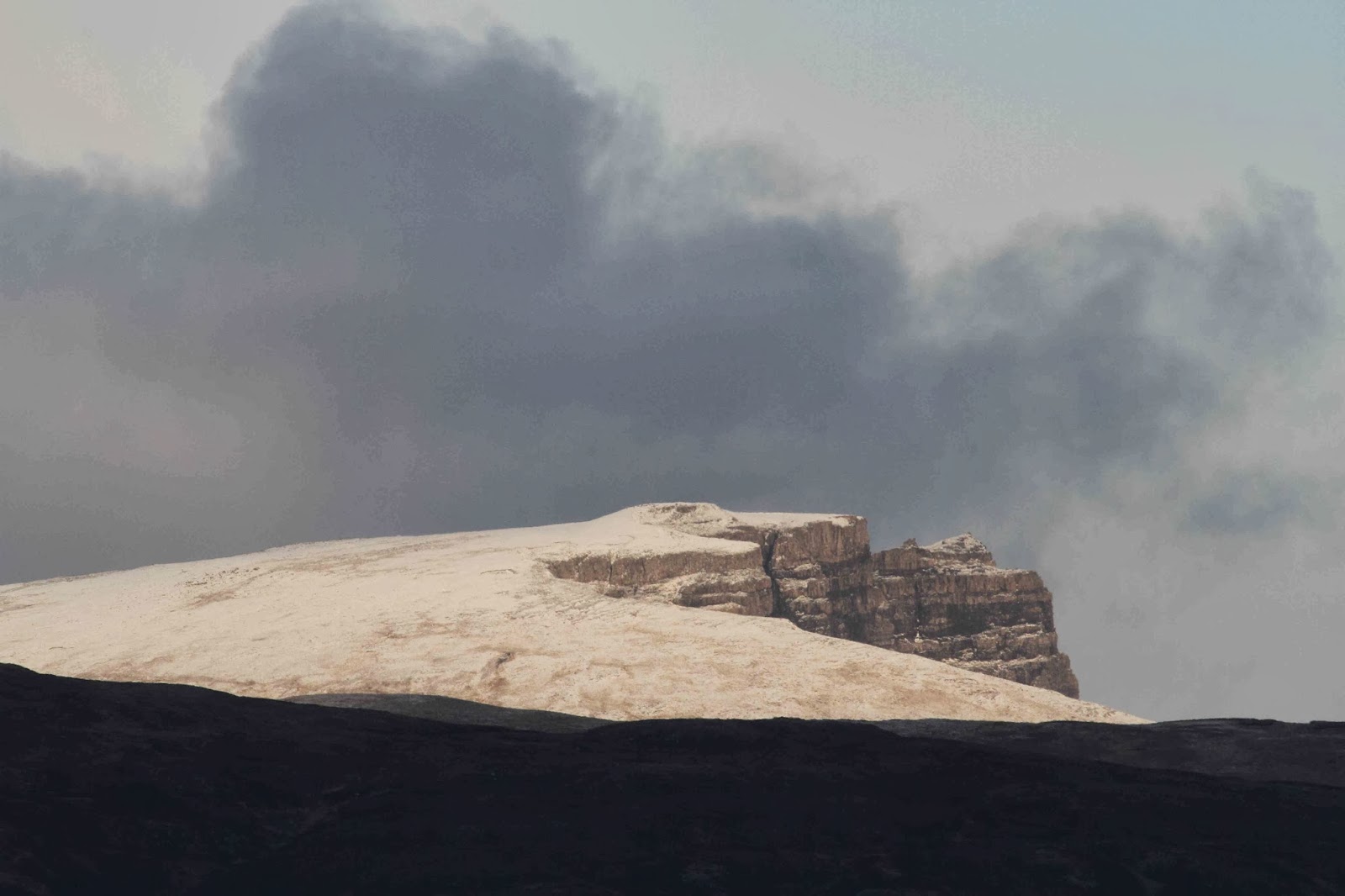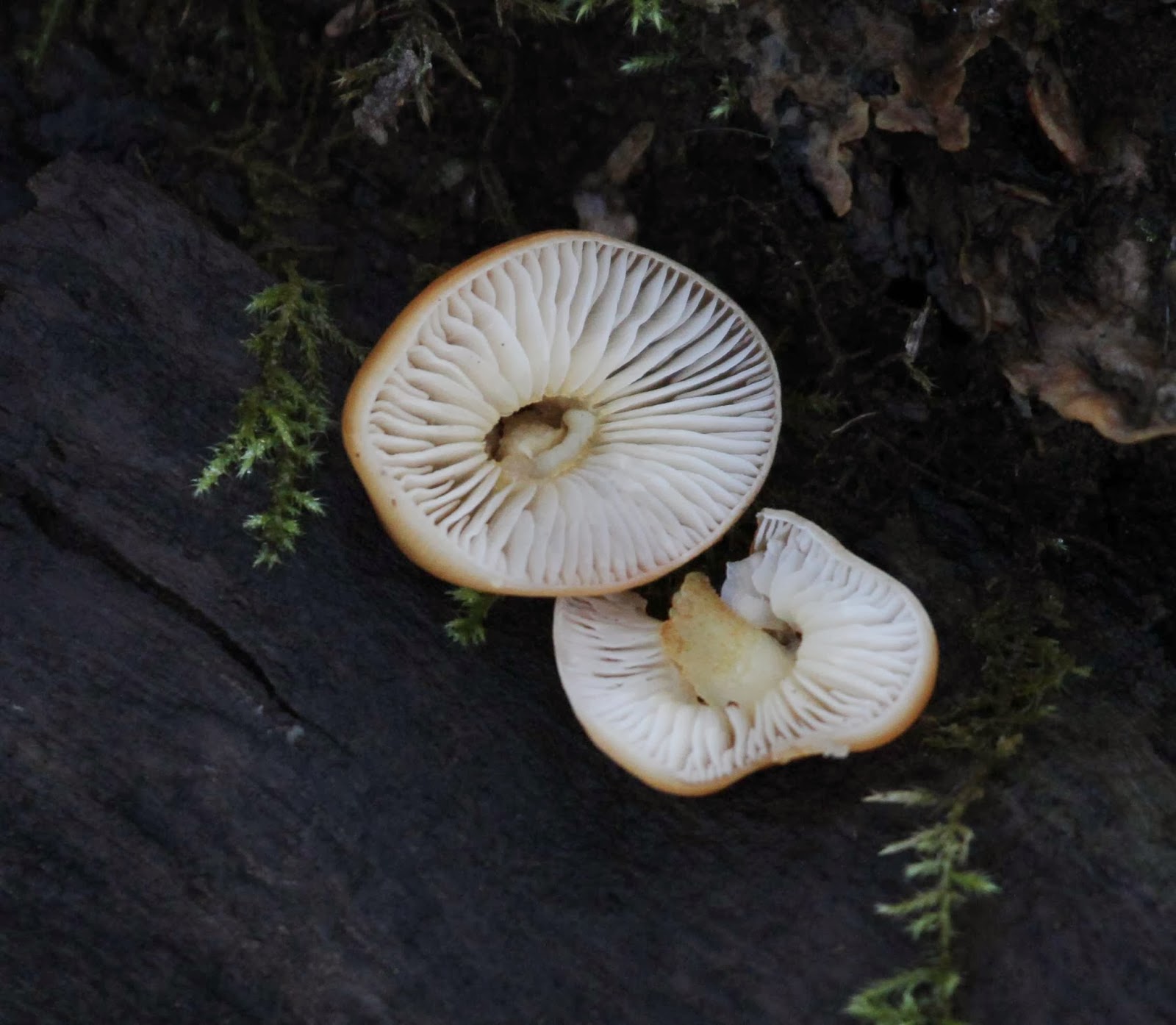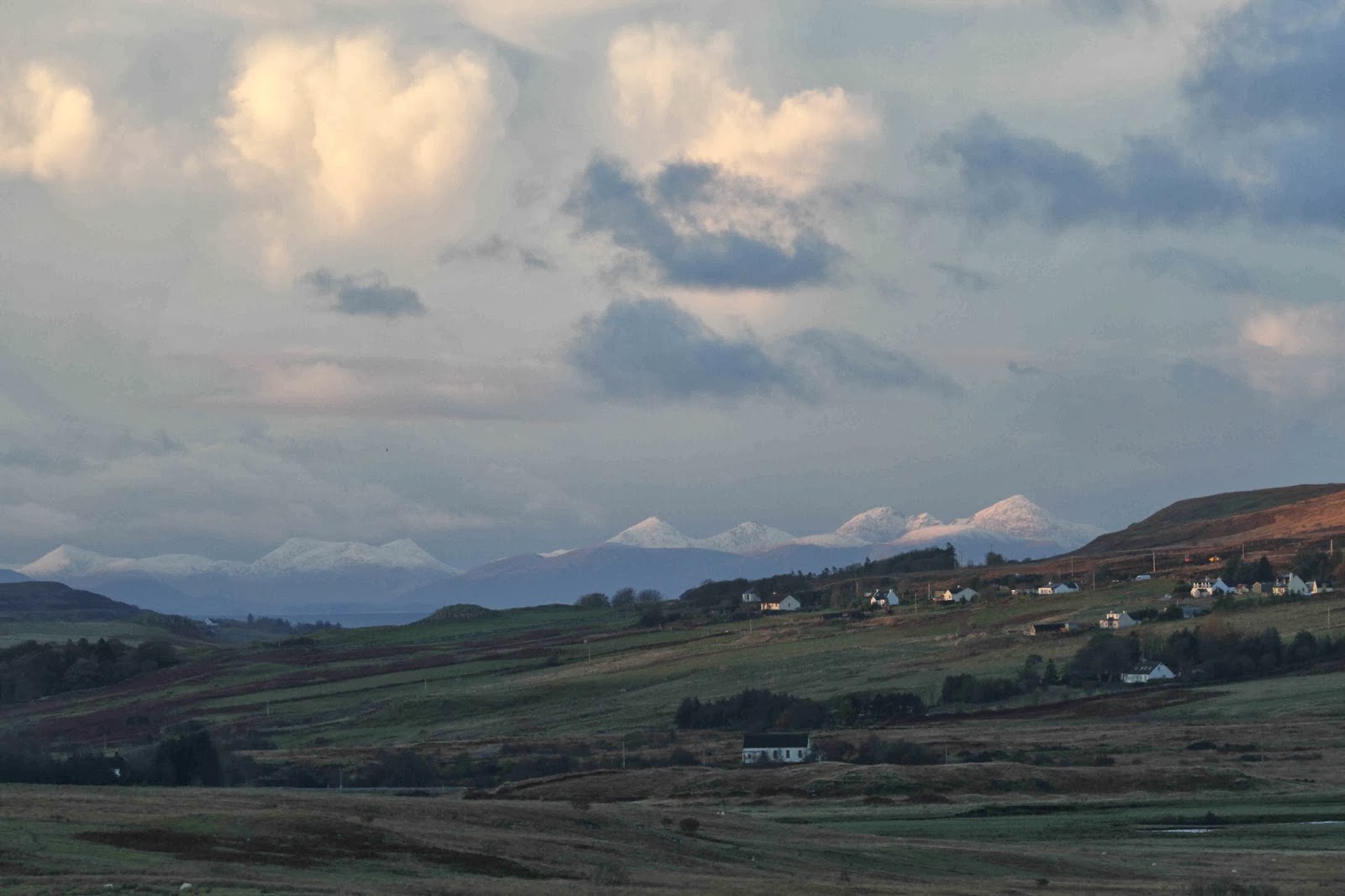8th
Lenticular-like cloud and Ben Tianavaig, looking east from Peiness.
11th
Female Common Crossbill (Laxia curvirostra) near feeders in the garden at Uigshader.
With male.
A couple of Goosanders (Mergus merganser) on the River Snizort at Skeabost.
With a female Tufted Duck (Aythya fuligula).
The southern Trotternish Hills to the north.
To the Misty Mountains and beyond, winds the road without end, redolent of the psyche's journey through infinite existence.
Back to the north, the cliffs overlooking the Old Man of Storr.
Ten oyster catchers (Haematopus ostralegus) eating worms. I'd never seen them away from the shore before but this is apparently normal behaviour. Also saw my first ever reed bunting, amongst reeds; of the approximately 2 seconds it stopped fidgeting about and stood in the open, I got about 1.4 seconds worth of a great binocular view. It was a nice experience but, of course, not enough for skyebirds.com.
12th
Looking south eastwards from Uigshader. This reminds me of the strange, planet-sized storm clouds on Jupiter.
14th
The geology outing to Brother's Point came with the added bonus of two adult sea eagles (Haliaeetus albicilla) at Port Earlish.
As well as this snowy lichen.
Looking over Brother's Point to the Scottish mainland.
Rock Pipit (Anthus petrosus)
Westwards to the Trotternish Hills.
16th
A Dipper (White-Fronted - Cinclus cinclus) on the River Snizort.
17th
Velvet Shank (Flammulina velutipes var. velutipes) (thanks to i-Spot). This common mushroom grows on dead wood. According to the excellent blog The Mushroom Diary: "You can cook them but they lack any real flavour. The caps are best chopped into strips and added to soups. The Japanese can’t get enough of them and cultivate a form of the Velvet Shank in high quantities, commercially known as Enoki-take".
And its gills.
A startled goosander on the River Snizort south of the Struan Road. This was a reconnaissance walk aimed at organizing an expedition to find the source of the River Snizort but the west bank was so boggy and full of run off channels that I struggled about 1.5 miles before turning back.
I imagine few people have seen these rapids as the terrain is so difficult to negotiate.
22nd
Report from Judy: "Loch Suardal et al today - whooper swans, mallards, widgeon, golden eye and 2 magnificent eagles soaring high ( golden, I think )".
25th
A Eurasian Woodcock (Scolopax rusticola) in the garden at Uigshader; never seen one before. The images are unclear thanks to a rain-wetted kitchen window and very poor lighting which meant a fast shutter speed was not possible even at maximum aperture and ISO setting. These birds are apparently difficult to spot because of their nocturnal and crepuscular lifestyle and their brilliant camouflage. According to Bob McMillan some woodcocks breed on Skye but most are winter visitors from Scandinavia and there are also some passage migrants, most noticeably in spring. Sad to say again, these birds are heavily predated by humans with guns. One wonders if Homo destructo will ever truly evolve into Homo sapiens. I'm sure most species would be delighted to see it become Homo dodo.
It would be really miffed to learn it didn't make it onto skybirds.com.
































































